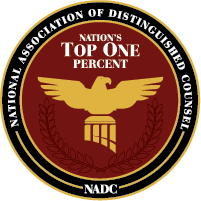In recent years, the United States has witnessed a notable surge in class action lawsuits, reshaping the legal landscape and impacting various sectors. These collective legal actions, which allow large groups of individuals to sue a defendant as a single entity, have become increasingly prevalent. This rise can be attributed to a combination of legislative changes, heightened public awareness, and strategic litigation funding.
As these collective legal actions become more prevalent, they highlight important trends and shifts in how groups of individuals seek justice and accountability in the face of corporate or institutional wrongdoing. Understanding the driving forces behind this trend is crucial for comprehending its implications and navigating its complexities.
What Are the Key Factors Contributing to the Rise?
Several factors have contributed to the increase in class action lawsuits in the United States. Changes in laws and regulations have made it easier for groups to file suits.
Increased public awareness and access to information have also played a role, empowering more people to take collective action. Additionally, the rise of litigation funding has provided the necessary financial support for plaintiffs to pursue these often expensive cases.
In addition to making these claims easier to manage for the legal system, these lawsuits provide protections to the defendants involved in the claim, according to Cornell. With the increase in internet use and advertisement for class action lawsuits, more individuals are aware of the existence of these claims.
What Do the Statistics Say?
Recent statistics highlight the growing trend of class action lawsuits. According to a study by the Federal Judicial Center, class action filings increased by over 50% from 2008 to 2018. There was a 66% increase in filings in the consumer sector alone over the same period.
Employment-related class actions have also grown significantly, with a 34% increase reported from 2010 to 2020.
Evolution of Class Action Lawsuits
Class action lawsuits have a long history in the United States and have evolved significantly over the past century. Initially used primarily for civil rights and consumer protection cases, their scope has broadened to include various sectors like employment, securities, and environmental issues. This expansion reflects changes in both legislation and societal attitudes toward collective legal action.
Statistics Over the Last Few Years
Over the last several years, class action lawsuits have dispersed much greater settlement values to plaintiffs. According to Stanford, there were 87 settlements valuing a total of $1.8 billion.
But in 2022, Cornerstone Research determined that there had been a significant increase. Jumping to 105 settlements from 87 the previous year, there was also a massive increase in the overall value of claims. Nearly doubling, these class action lawsuits were valued at $3.8 billion in 2022. This was found to be a 15-year high in the number of settlements.
While 215 lawsuits were filed in 2023, not all of these resulted in settlements. The number of awarded settlements decreased by 21% compared to the year before, meaning there were less than 70 settlements. These claims, in total, were valued at over $50 billion.
What Are the Common Sectors for Class Action Lawsuits?
Class action lawsuits are prevalent in several sectors. Consumer protection cases involving false advertising and defective products are among the most common. Employment-related class actions, dealing with wage and hour disputes and discrimination, also represent a significant portion. Additionally, the securities sector sees numerous class actions, often related to fraud and misrepresentation.
There are also other common sectors for class action lawsuits. For example, as people realize that many individuals have similar experiences, they become much more likely to identify there are issues with particular circumstances. Now, individuals advertise class action lawsuits for popular gaming platforms, work applications, social media, and many other items.
As the gaming and internet-related industries continue to evolve and grow in popularity, we may be able to expect further growth in class action lawsuits in these areas.
What Are the Positive and Negative Effects of Class Action Lawsuits on the Greater US Population?
There are several potential consequences class action lawsuits can have, both positive and negative. We may see a few of these effects impact the general population more frequently as class action lawsuits continue to increase in popularity.
How Do Class Action Lawsuits Benefit the Public?
Class action lawsuits offer several advantages to the greater US population. They provide a mechanism for individuals who might not have the resources to file a lawsuit on their own to seek justice collectively. This collective power can hold corporations and institutions accountable for widespread harm, leading to significant changes in corporate behavior and policy reforms.
Notable consumer protection, environmental justice, and civil rights cases have resulted in significant settlements or verdicts that not only compensate victims but also serve as a deterrent against future misconduct.
What Are the Economic Benefits of Class Action Lawsuits?
Economically, class action lawsuits can lead to substantial financial compensation for plaintiffs. These settlements often cover damages such as medical expenses, lost wages, and other economic losses.
Additionally, they can result in changes that benefit society at large, such as improved product safety standards and more ethical business practices. This ripple effect can lead to a safer, fairer marketplace for all consumers.
How Can Class Action Lawsuits Create Systemic Change?
Beyond individual compensation, class action lawsuits can drive systemic change. Successful cases often expose harmful practices and injustices, prompting legislative or regulatory changes. For instance, class action suits have been instrumental in improving workplace conditions, environmental policies, and consumer rights. These legal actions can set important precedents that shape future legal standards and societal expectations.
What Are the Potential Downsides of Class Action Lawsuits?
Despite their benefits, class action lawsuits also have potential downsides. Critics argue that they can lead to excessive litigation, burdening the court system and creating high legal costs for defendants, which may ultimately be passed on to consumers through higher prices.
Additionally, some companies may settle cases to avoid negative publicity without admitting wrongdoing or making meaningful changes.
How Might Class Action Lawsuits Impact Innovation and Business Practices?
Another potential negative effect is the impact on innovation and business practices. Companies facing frequent litigation may become more risk-averse, potentially stifling innovation and growth.
The threat of costly lawsuits might also lead to increased operational costs, affecting the company’s ability to invest in new technologies or products. This can have a broader economic impact, influencing market dynamics and competition.



